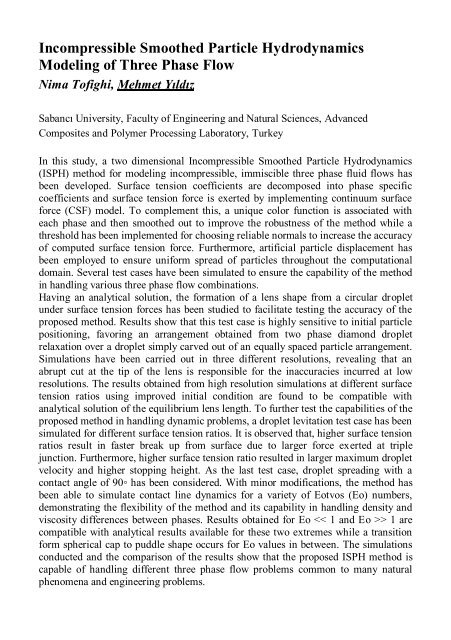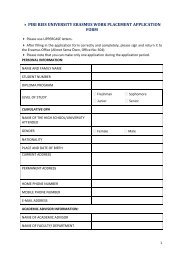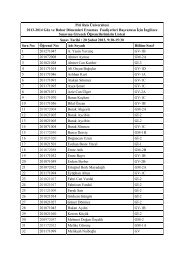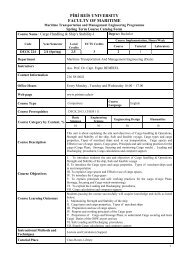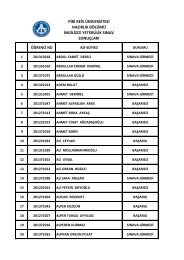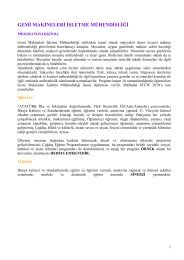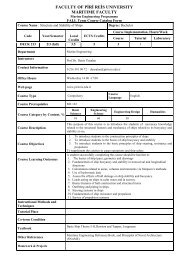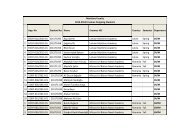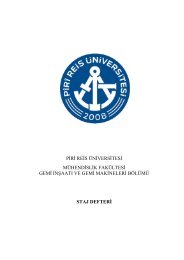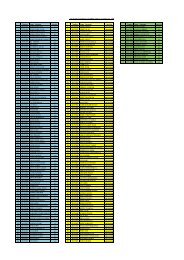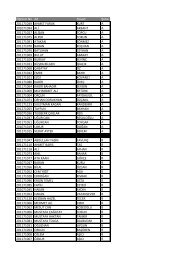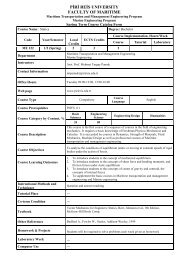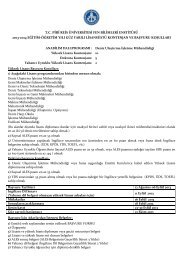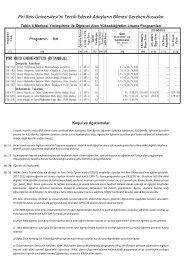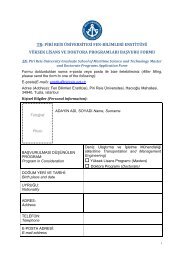16.Ulusal Sıvıhal FiziÄi Sempozyumu - Piri Reis Ãniversitesi
16.Ulusal Sıvıhal FiziÄi Sempozyumu - Piri Reis Ãniversitesi
16.Ulusal Sıvıhal FiziÄi Sempozyumu - Piri Reis Ãniversitesi
Create successful ePaper yourself
Turn your PDF publications into a flip-book with our unique Google optimized e-Paper software.
Incompressible Smoothed Particle Hydrodynamics<br />
Modeling of Three Phase Flow<br />
Nima Tofighi, Mehmet Yıldız<br />
Sabancı University, Faculty of Engineering and Natural Sciences, Advanced<br />
Composites and Polymer Processing Laboratory, Turkey<br />
In this study, a two dimensional Incompressible Smoothed Particle Hydrodynamics<br />
(ISPH) method for modeling incompressible, immiscible three phase fluid flows has<br />
been developed. Surface tension coefficients are decomposed into phase specific<br />
coefficients and surface tension force is exerted by implementing continuum surface<br />
force (CSF) model. To complement this, a unique color function is associated with<br />
each phase and then smoothed out to improve the robustness of the method while a<br />
threshold has been implemented for choosing reliable normals to increase the accuracy<br />
of computed surface tension force. Furthermore, artificial particle displacement has<br />
been employed to ensure uniform spread of particles throughout the computational<br />
domain. Several test cases have been simulated to ensure the capability of the method<br />
in handling various three phase flow combinations.<br />
Having an analytical solution, the formation of a lens shape from a circular droplet<br />
under surface tension forces has been studied to facilitate testing the accuracy of the<br />
proposed method. Results show that this test case is highly sensitive to initial particle<br />
positioning, favoring an arrangement obtained from two phase diamond droplet<br />
relaxation over a droplet simply carved out of an equally spaced particle arrangement.<br />
Simulations have been carried out in three different resolutions, revealing that an<br />
abrupt cut at the tip of the lens is responsible for the inaccuracies incurred at low<br />
resolutions. The results obtained from high resolution simulations at different surface<br />
tension ratios using improved initial condition are found to be compatible with<br />
analytical solution of the equilibrium lens length. To further test the capabilities of the<br />
proposed method in handling dynamic problems, a droplet levitation test case has been<br />
simulated for different surface tension ratios. It is observed that, higher surface tension<br />
ratios result in faster break up from surface due to larger force exerted at triple<br />
junction. Furthermore, higher surface tension ratio resulted in larger maximum droplet<br />
velocity and higher stopping height. As the last test case, droplet spreading with a<br />
contact angle of 90◦ has been considered. With minor modifications, the method has<br />
been able to simulate contact line dynamics for a variety of Eotvos (Eo) numbers,<br />
demonstrating the flexibility of the method and its capability in handling density and<br />
viscosity differences between phases. Results obtained for Eo > 1 are<br />
compatible with analytical results available for these two extremes while a transition<br />
form spherical cap to puddle shape occurs for Eo values in between. The simulations<br />
conducted and the comparison of the results show that the proposed ISPH method is<br />
capable of handling different three phase flow problems common to many natural<br />
phenomena and engineering problems.


